

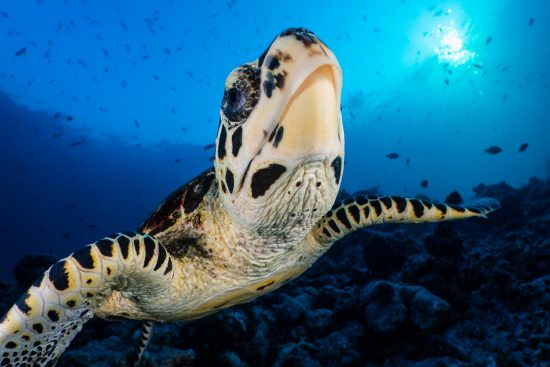
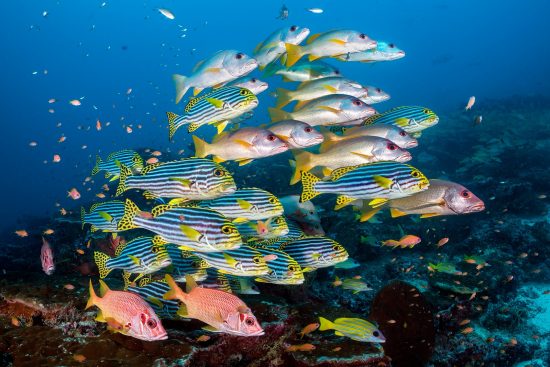
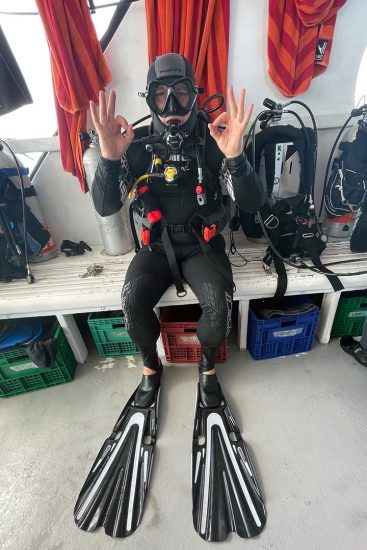
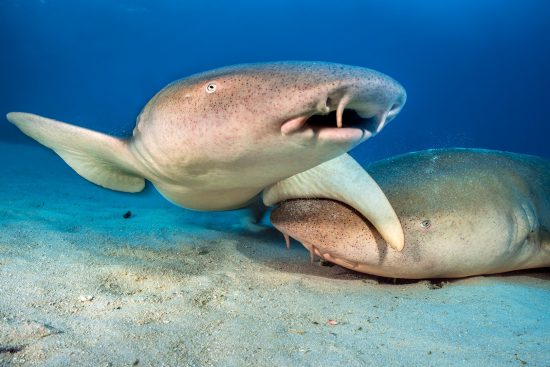
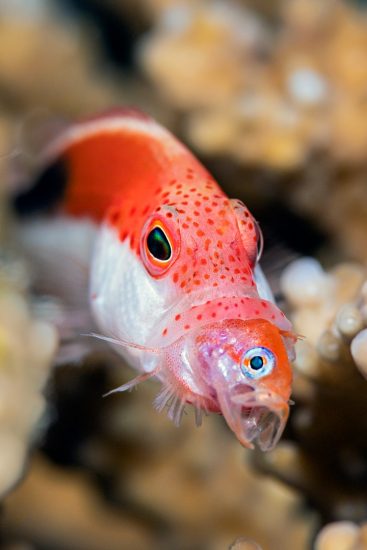
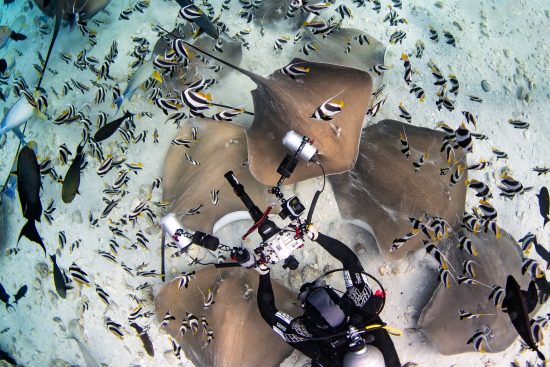
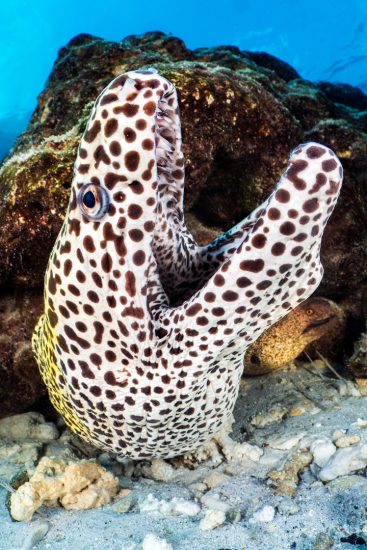
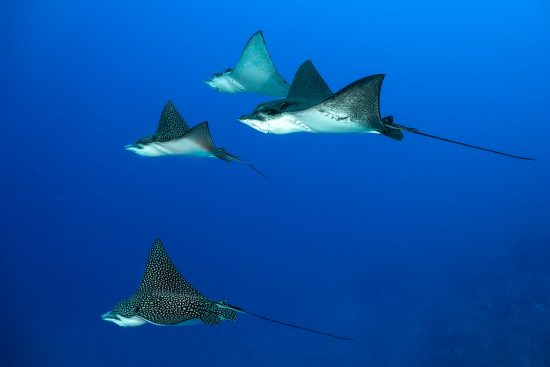
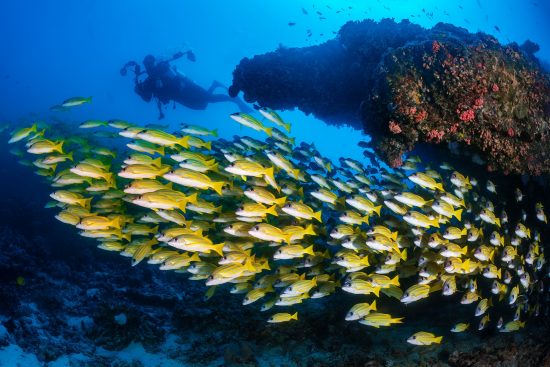
It is not a secret that the diving around the Maldives’ central atolls, including North and South Male and Ari in the first third of the year, is outstanding. Just a couple of weeks ago the sea was endlessly mirror calm, so warm that my 0.5mm Coral wetsuit left me feeling overdressed (that suit is so warm, despite being so thin), and rocking with marine life. This is the realm of mantas, sharks, eagle rays, turtles, reefs and channels packed with fish providing spectacle upon spectacle.
Divers love this area and many return year on year to enjoy these thrills, either from their favourite resort islands or from liveaboards. Conversely, underwater photographers have a more complex relationship with the diving here. The Maldives has the potential to let us create lifetime favourite images, but it can also be a tough place to shoot. While some dives serve up perfect photography conditions, others might bring fierce currents or unreliable visibility, which hinder image making. While most divers love an easy Maldivian drift dive, photographers find them hard work, having to kick against the current each time they want to frame a shot.
For me the secret to unlocking this destination photographically is to select the right sites and then dive them the right way. We never try and do all the sites, instead focusing on the ones that will be most productive in terms of subject and conditions and repeat them. To do this, you need to make sure everyone on the boat wants the same diving – which is why I charter the whole liveaboard and run photographer-only trips. Once we've booked the boat, we don't fill it up! Modern Maldives liveaboards are really spacious and extremely comfortable, we were on the Emperor Serenity, which can easily take up to 26 divers, but I limited my group to 16, or loose dive teams of 5, 5 and 6. This arrangement means that we all pay a bit more, but by running at reduced capacity we all enjoy the extra space aboard, and far more importantly photographic headroom underwater. I’ve found the reefs on this route very changeable year on year, so I don’t dictate the itinerary to the guides, instead, I tell them the sites we’ve liked in the past, the subjects and conditions we find most productive and then use their up to date local knowledge to define our actual dive plans for this year.
What I love about these reefs is the photographic challenge. Every dive has sky-high photo potential, but shooting here isn’t always easy. Sometimes the mantas don’t show up, sometimes the sharks don’t come close enough, sometimes there is too much current to shoot the turtle, sometimes the visibility doesn’t allow us to capture the majesty of the snappers streaming over the reef. But sometimes it does come together. Our goal as photographers is not to capture 100s of good pictures on a dive (who is going to look at them), but instead to create a handful of really special shots during a trip. The Maldives can be a challenging place for the former, but is very well suited to the latter.
One of the photos shows me shooting the stingrays at Fish Factory with the new Nauticam EMWL lens. For those interested in this lens, I was just having fun here at the end of the dive, this is not my normal lighting setup with it. The eagle-eyed will have noticed from this photo that I dive with my Genius dive computer not on my wrist, but on the strobe arm of my camera. I do this for several reasons, but mainly because I am always looking at my camera. Having it there makes it easier for me to keep an eye on all the important information. After all, if my camera isn’t diving, then neither am I!
 Alex
Alex 9th May 2022
9th May 2022